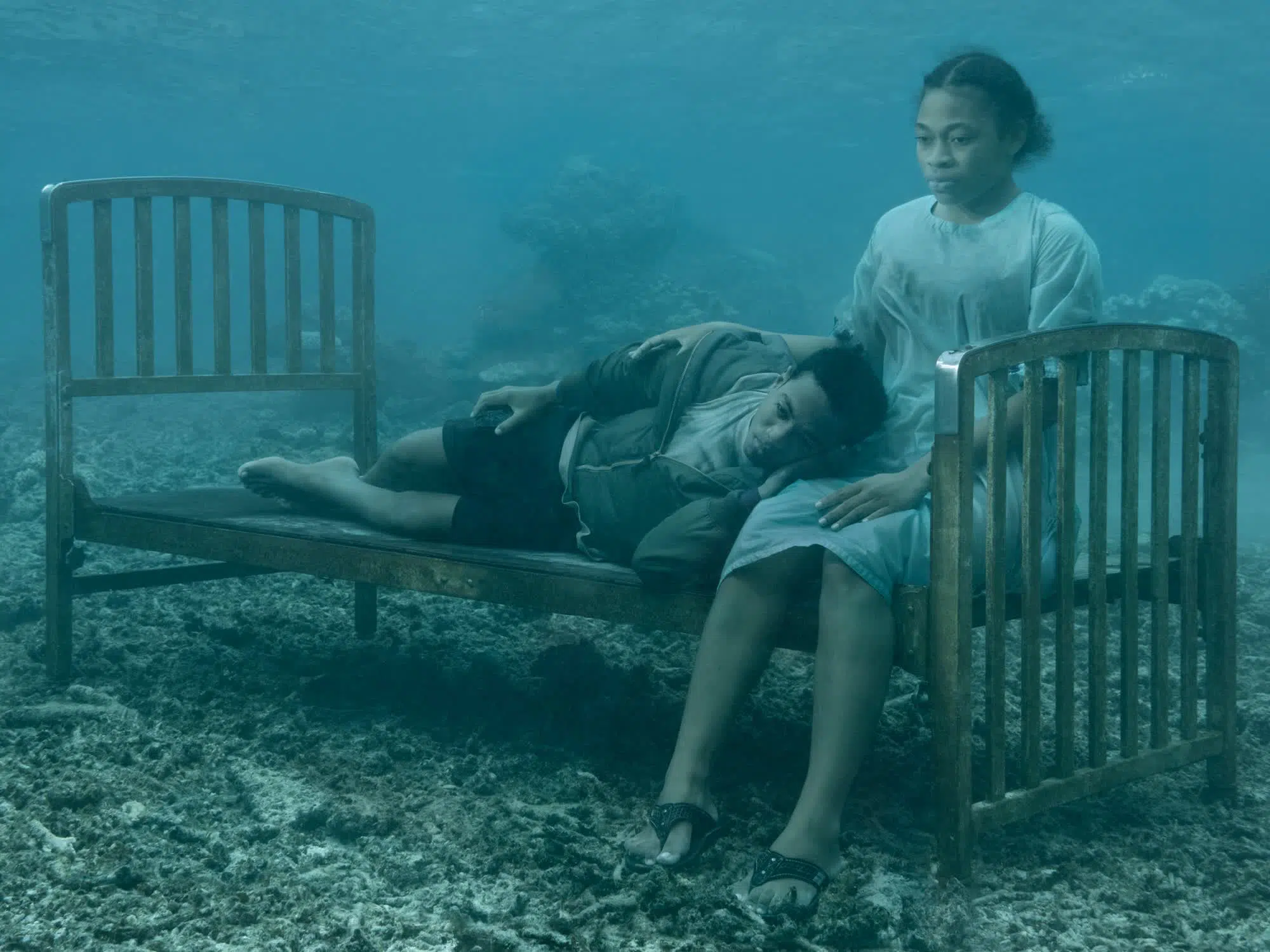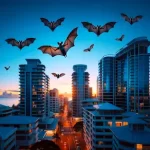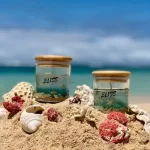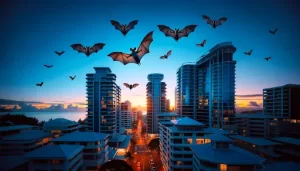These haunting underwater photos portray climate change in a new way:
Akessa stares straight ahead with a look of fierce indignation.
The 15-year-old is sitting in a rickety chair. Her hands are clasped in her lap.
Her white skirt is billowing ever so slightly in what, at first glance, you might assume is the wind.
The scene seems nearly normal until more details come into focus:
The background is an eerie shade of blue you wouldn’t see on land.
Thousands of broken shards of coral cover the ground. And a reef looms behind her.
There is no breeze blowing here.
This girl and her searing gaze are underwater.
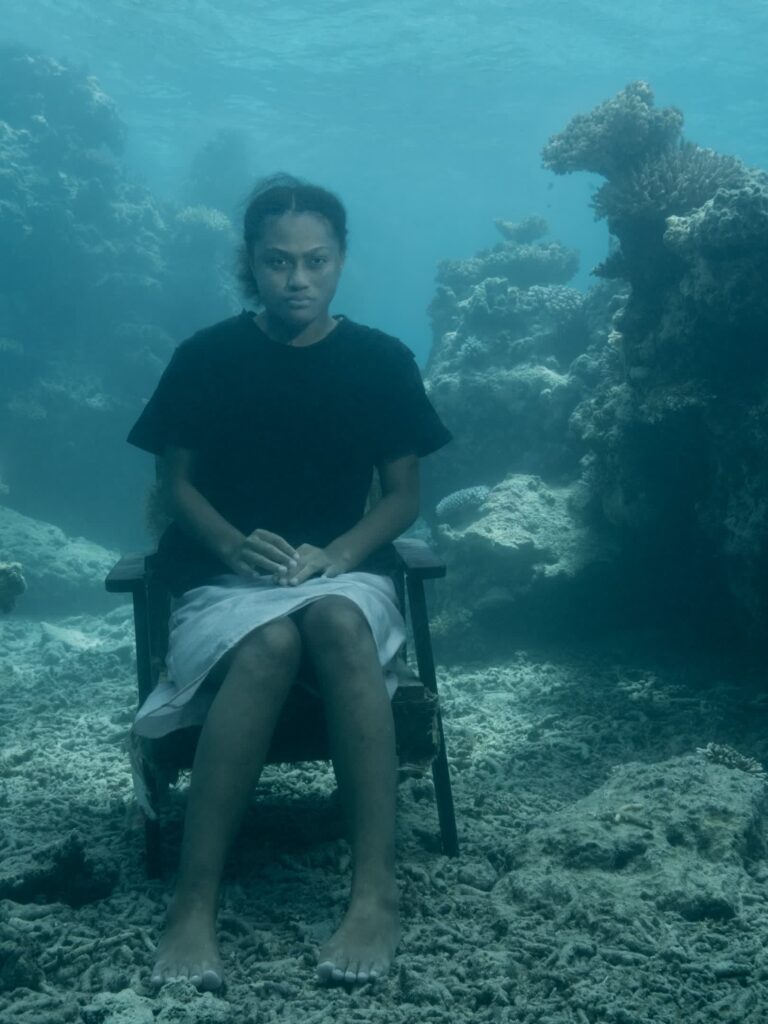
The stunning portrait is one in a series of images in “SINK / RISE,” the latest project from fine art photographer Nick Brandt.
The photos feature South Pacific islanders representing people who are on the brink of losing their homes, lands and livelihoods due to climate change.
And despite the difficulty of photographing them on the ocean floor, Brandt knew that’s what he had to do.
The dramatic and devastating impact sea level rise will have on the lives of millions of people can be difficult to see and grasp in real time, he says.
So Brandt came up with a way to show it symbolically.
“Somebody said it was quite post-apocalyptic. And I said, ‘No, it’s pre-apocalyptic.’ Because it hasn’t actually happened to these people yet,” Brandt says.
And that, he says, is part of the point.
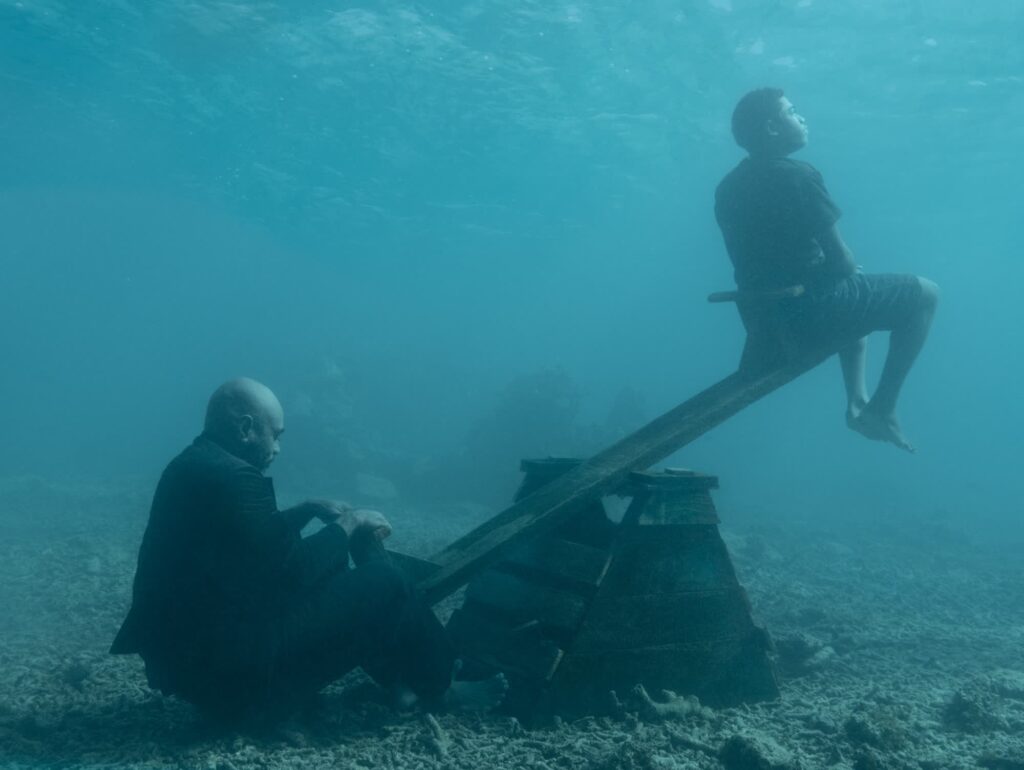
Akessa and the other coastal residents of Fiji he photographed for this project haven’t seen the world they know sink underwater — yet.
But many of them will, he says, if climate change continues at its staggering pace and water levels keep rising.
Pacific islands like these contribute only .03% of global greenhouse gas emissions, Brandt says,
but they’re facing the alarming prospect of losing everything to climate change anyway.
“They’re the most vulnerable to the consequences of the industrial world’s ways,” Brandt says.
The photographer is wary of ascribing a message to his creative work. He knows viewers will have their own interpretations.
But he hopes these photos, portraying what he fears will happen in the future,
help others see the devastating impact of their actions in the present.
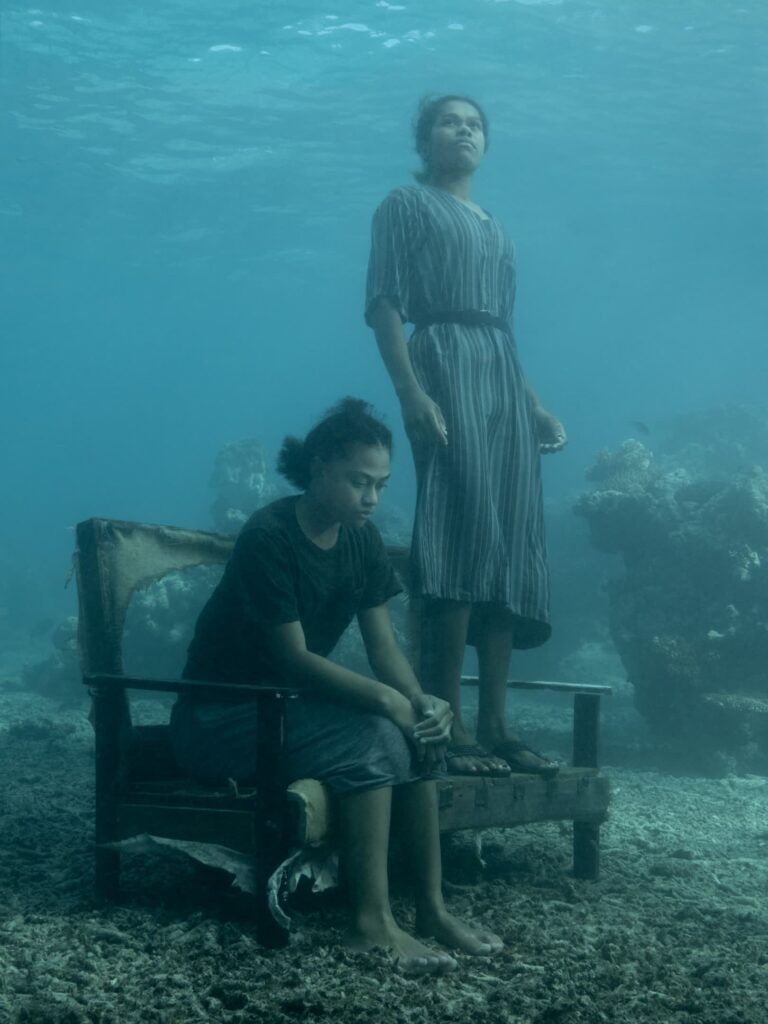



The complicated photo shoot took weeks
Before embarking on this project, Brandt says the only underwater photos he’d taken were vacation shots of tropical fish that caught his attention.
Photographing people underwater — and helping them feel at ease and look natural despite the strange circumstances — is a far more difficult undertaking.
But Brandt knew that if he succeeded and was able to create the concept he’d envisioned, the images would be unlike anything he’d seen before.
He auditioned about 200 people for about 20 spots in the cast. He enlisted divemasters to ensure safety and help with scuba training.
He stood by for days, waiting, when muddy runoff from torrential rains made the water off the coast of Fiji so murky that taking photos was impossible.
Whenever the water cleared, Brandt says he had a narrow window of time to stage and shoot a scene while whoever he was photographing got into position,
removed the regulator supplying them with oxygen and held their breath.
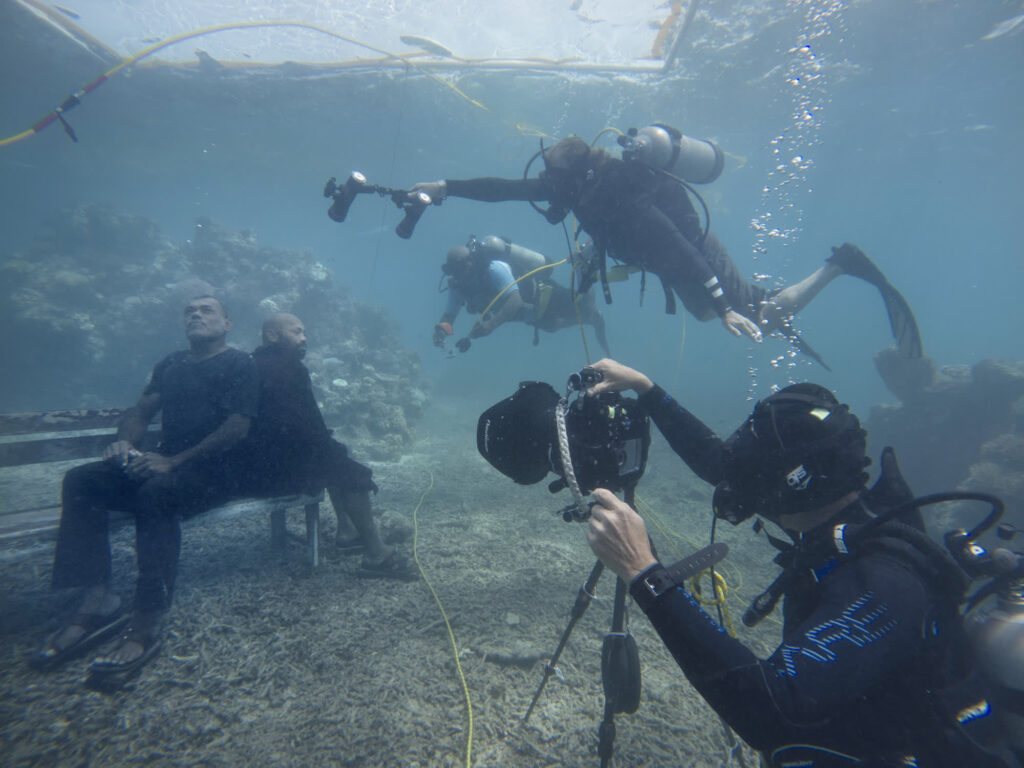
In the early days of the six-week shoot,
Brandt says most of the models could only manage to hold their breath for about 15 seconds before they needed to reconnect to the underwater oxygen supply,
and it would take almost 30 minutes to set up each shot.
By the end, some were able to hold their breath for well over a minute, and setting up shots took only a minute or two.
“Getting to that point was very, very complicated,” Brandt says.
A lot of it came down to practice. Good communication also helped, Brandt says.
In order to provide guidance to models while he was photographing them, Brandt and his assistants used hard-wired communication to relay information up to the boat.
From there, someone would repeat it into a speaker that broadcast underwater.
Through the entire shoot, Brandt says,
his models and support crew brought enthusiasm and dedication to the project that made everything come together even on the most difficult days.
“They were amazing. The cast was so engaged, so much part of it, that even when we’d finished photographing them,
and they could just chill out and be back on the boat and chatting, they would just basically dive back in the water to help,” he says.

These weren’t deep-sea dives. Brandt says most of the photos were taken 2-4 meters (about 7-13 feet) below the water’s surface.
But still, there was a very real risk lurking behind the natural appearance of those everyday scenes they created together.
“If you shoot up to the surface from even as little as 8 feet (below), having held your breath, having taken in a breath at 8 feet, you can still damage your lungs,” Brandt says.
This divemaster kept everyone safe
Volitiviti Niutabua knew well how dangerous the circumstances of a photo shoot like this could be. He also knew how important Brandt’s project was.
The 53-year-old divemaster, who goes by Viti, is a lifelong resident of Fiji, an archipelago that is home to almost 1 million people.
The island nation is particularly vulnerable to the impacts of climate change and has been pummeled by intensifying tropical cyclones in recent years.
Niutabua is a dedicated conservationist.
or years, he says he’s been struggling to get others inside and outside his country to listen when he warns of the dangers of climate change and the harms to wildlife he’s already seeing.
Meeting Brandt, he says, was like a gift from God.
“He gives his heart and tries to show the world…people are suffering,” Niutabua says.
“He’s doing this on behalf of the Pacific Islanders, and not just Pacific Islanders, all the low islanders on the planet. This is our story.”
A behind-the-scenes video of “SINK / RISE” shows Niutabua preparing a weighted belt to be placed around Akessa’s waist, then guiding her down from the boat into the chair.
“Don’t worry,” Niutabua recalls telling the teenager and others who were photographed in the shoot.
“You’re safe in my hands. I’m going to make sure you’ll come back to the boat.”
Niutabua wasn’t only working behind the scenes. He also posed in front of the camera with his 25-year-old son, Ben.
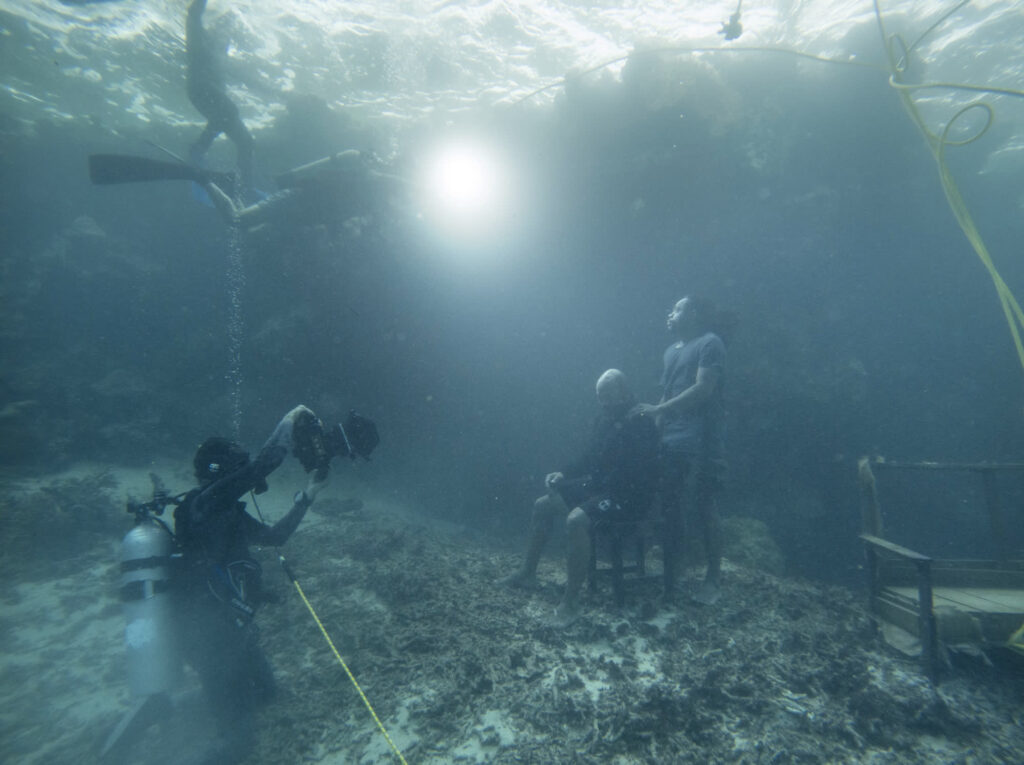
For Niutabua, the reality that Brandt’s surreal photos are exposing is all too clear.
The divemaster lives steps from an idyllic beach along the coast but, like many in Fiji,
he’s building a house further inland that he hopes has a better shot at withstanding the impacts of intensifying storms.
“We didn’t cause this. The Pacific Islanders, we are the victims,” Niutabua says.
But still, he says everyone on earth, including residents of Fiji,
needs to do whatever they can to reverse course and mitigate the impacts of climate change, before it’s too late.
The undersea images convey everything from lost childhoods to hope for the future
While “SINK / RISE” centers around the human impact of climate change, Brandt says he learned more about the environmental impact, too,
when they began shooting in a location about a kilometer from shore off the Fijian island of Vanua Levu.
Broken pieces of coral covered the ocean floor.
“That’s all happened from climate change-intensified tropical cyclones.
We see the damage done by a tropical cyclone as it sweeps through land and just tears apart buildings and rips out trees.
But what I didn’t understand was what happens underwater with that,” Brandt says. “Coral reefs are just annihilated, broken into a million pieces.”
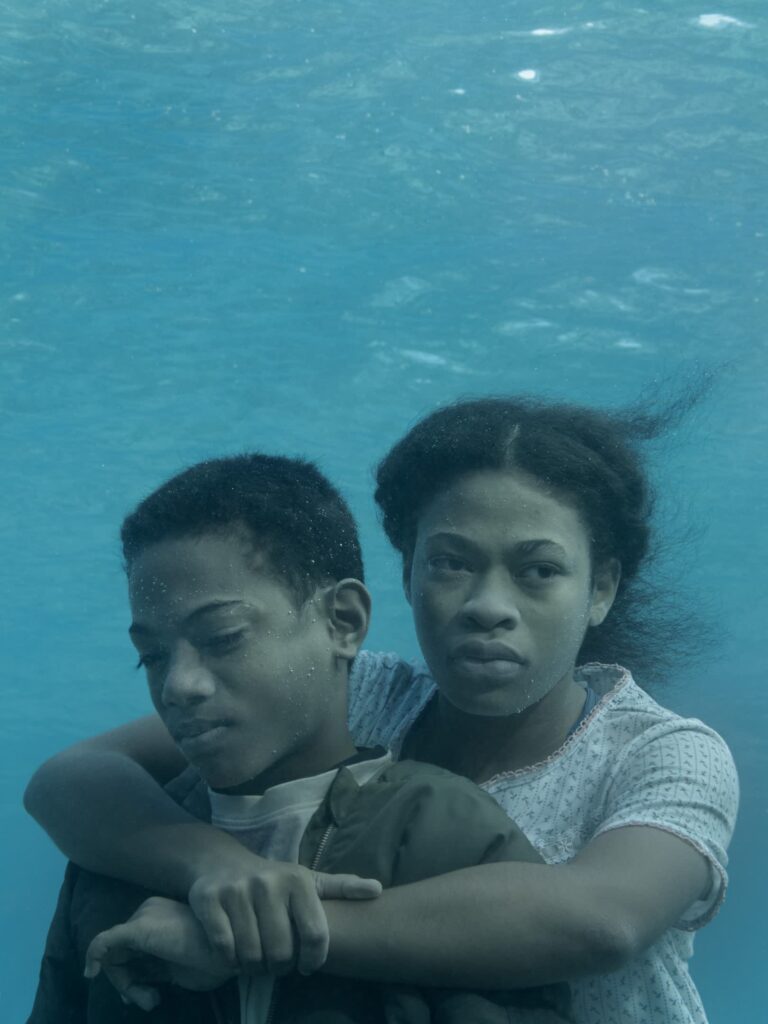
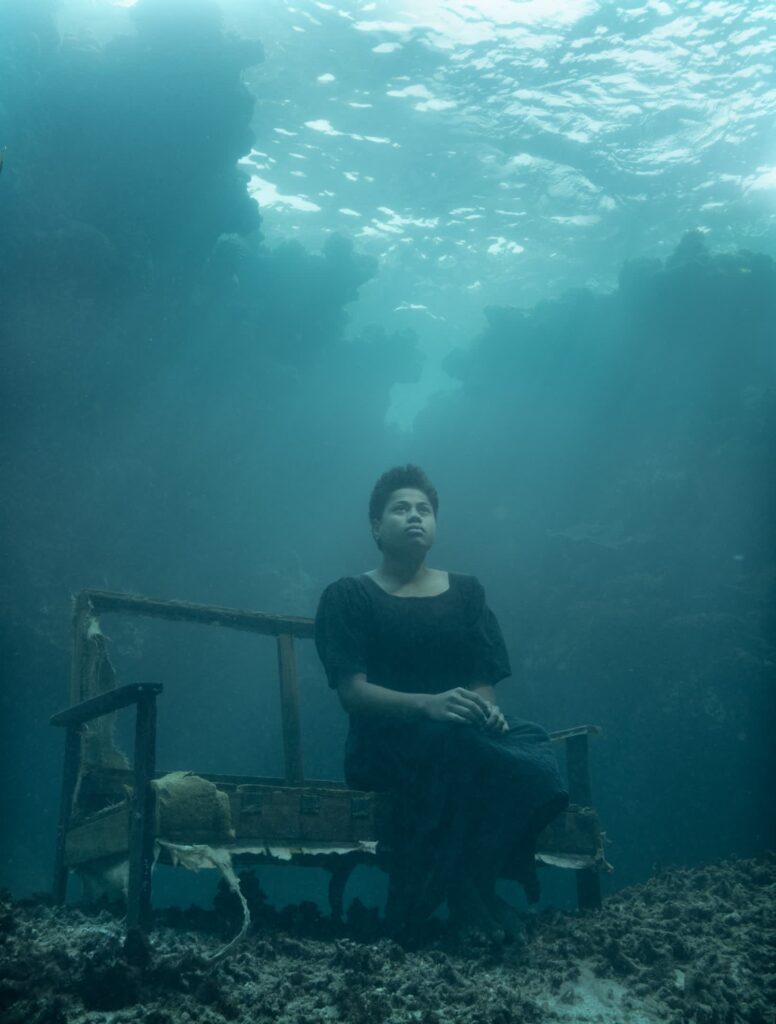
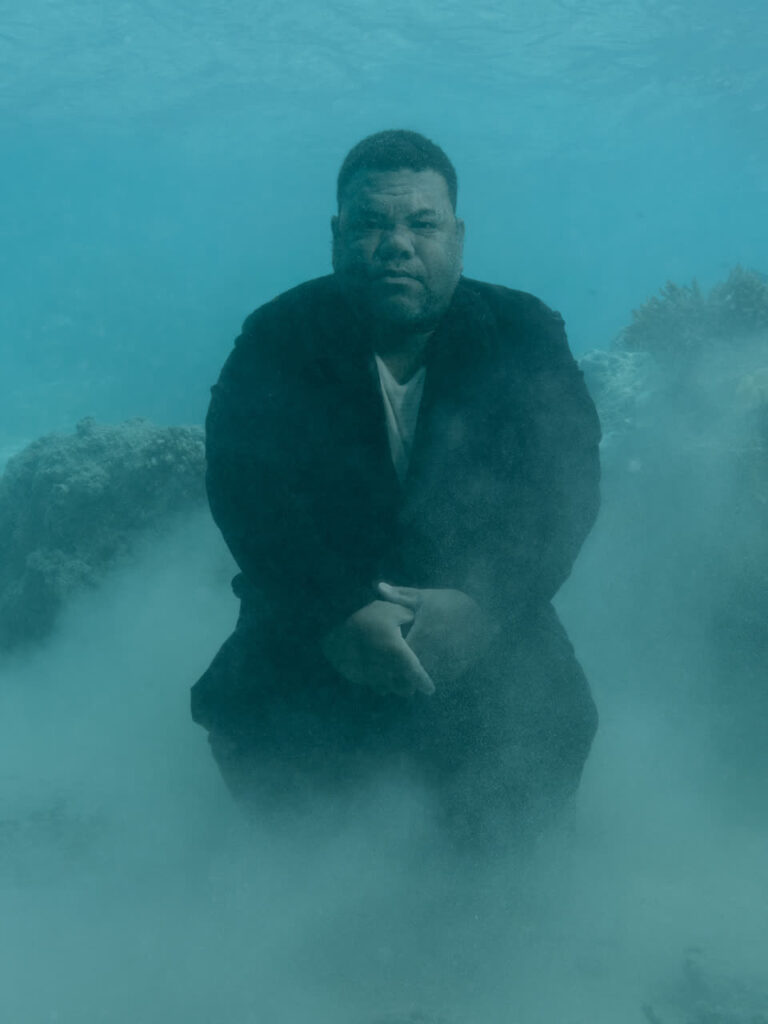

To create the haunting images of people standing amid the broken coral, Brandt used everyday furniture typically seen inside homes and around schools.
“It’s meant to feel very matter-of-fact. They’re just sitting there with the barest essentials for living. A table and chair, a bed,”
Brandt says. “And then occasionally I go into something like the seesaw, which is this sense of…a kind of lost childhood.”
Sometimes, Brandt says, what isn’t in the images can be just as striking.
One photo, titled “Serafina At Table,” shows a girl sitting at a table across from an empty chair.
“For me that photograph works not just because of her and her expression, but because of that empty chair and what it implies,” he says.
While he hopes viewers will focus on the images he created,
the concept behind them and the emotions they evoke, Brandt says he made sure plenty of behind-the-scenes photos were taken, too.
At a time when AI-generated images are becoming increasingly common,
Brandt says the artistic importance and emotional significance of real photographs showing real people cannot be overstated.

Since he first shared the photos publicly on his website recently, Brandt says he’s been struck by how viewers are responding.
“What I love is that people have said they go back to the photographs, and each time they go back, they see a different emotion in somebody’s face,”
Brandt says. “They can see everything from hope to resilience…to resignation.”
How can the same image be both bleak and hopeful?
Brandt points to a phrase popularized by Italian philosopher Antonio Gramsci: “pessimism of the intellect, optimism of the will.”
“Intellectually, you look at what is happening to the planet, at this rollercoaster ride towards apocalypse, towards environmental destruction.
And all the indications are humanity is not going to…act with sufficient urgency to correct course,” he says.
“The optimism of the will is that, there is, with determination, the possibility of mitigating the damage. … But it requires all of us to become better ancestors.”

“SINK / RISE” is the third chapter in a larger project Brandt has been working on for years.
The first two chapters showed people and animals impacted by climate change in Kenya, Zimbabwe and Bolivia.
Like the earlier chapters, “SINK / RISE” will be made into a book and displayed in art gallery shows.
Brandt says the duality people are seeing in these latest images resonates with a theme that ties all the photos together.
The larger effort’s title, “The Day May Break,” refers to a sort of fork in the road that society is currently facing.
“The day may break and the earth may shatter, or the day may break and the dawn will come,” Brandt says.
As Brandt sees it, what happens next is humanity’s choice.
This story is part of CNN’s coverage of climate change ahead of the COP28 summit — covering how the crisis affects our lives as well as the global politics and the potential solutions.
Source: CNN

